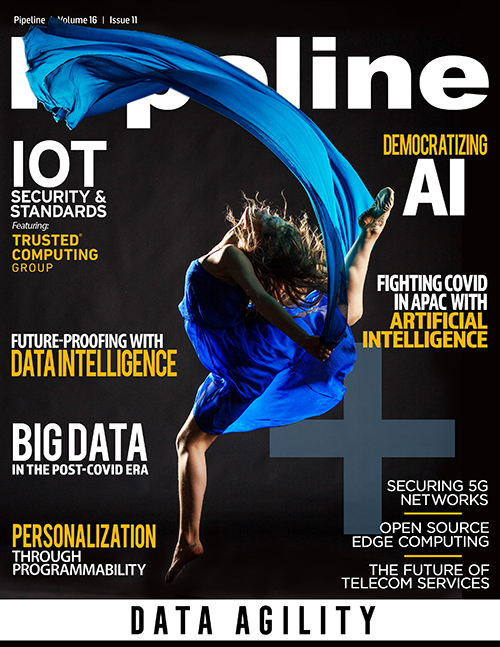Empowering the AI Boom in the APAC Region
in this market. Healthcare is stepping up to the plate across the region to address social determinants, apply predictive care and streamline administrative processes, ultimately saving the industry substantially. When COVID-19 hit, cutting-edge applications of AI radically enabled healthcare, giving us a glimpse of what’s to come in the future. In South Korea, AI-enabled, location-based messaging played a crucial role in reducing the virus’s spread. Simultaneously, robots in China delivered food, medicine and supplies to infected patients in hospitals and quarantined families.
Last year, the 2019 World Artificial Intelligence Conference offered a glimpse into the industry’s latest trends. It was fitting that the conference was named “Intelligent Connectivity, Infinite Possibilities,” because that is what AI truly delivers. Impacting so many areas of our future, AI is opening the door for global corporations to expand to this cultural, emerging region. These latest inventions are transforming industries from ‘smart’ trash cans to a 5G-based robot, used in hazardous industrial scenarios like chemical plants and mining firms. It was fascinating to learn, according to a report released at the conference, that China’s AI chips market was expected to reach 12.4 billion yuan (about 1.73 billion U.S. dollars) in 2019.
The heart of global AI development
At the heart of global AI development, APAC is pumping billions of dollars into AI-led initiatives. Throughout the region, many countries are formulating task forces and committees for creating detailed national AI strategies. Although each country’s budget, focus and approach slightly differ, all roads lead to automated economies and data ecosystems. For instance, in 2017, China launched its three-phase New Generation of Artificial Intelligence Development Plan. Setting broad goals throughout 2030, the nation is in the midst of its first phase. During this phase, China seeks to have AI technology applications become a new way to improve people’s livelihoods, strongly supporting China’s entrance into the ranks of innovative nations and comprehensively achieving the struggle toward the goal of a moderately prosperous society.
In 2019, the Smart Nation of Singapore, also the third-largest data center hub in the world, developed its own comprehensive National Artificial Intelligence Strategy. This strategy will play an integral role in the island’s Smart Nation Journey, which encourages Singaporeans, businesses, researchers and the government to work in tandem. The whole-nation effort also has many avenues where companies can receive support from its government to promote greater use of AI.
As the journey continues across the region, Japan’s “Society 5.0” recently updated its AI strategy in 2019 and targets five designated priority areas: manufacturing, transportation and logistics, health and medical care, agriculture and disaster response. South Korean leaders implemented a budget the equivalent of $21 billion US devoted entirely to science and technology and AI sectors. From the tigers to the dragons, it is no secret that APAC is driving AI.
Bringing AI to life
While all of these strategies are playing out, the spotlight is shining on the region’s data centers.
Here is where the script comes to life and the AI-driven strategies are deployed. While AI is being leveraged to operate and automate data centers, inside the facilities is where all of the region’s AI plans come to life. Act by act, data center operators are pivoting as the use of AI rapidly accelerates. As machine learning and artificial intelligence become more mainstream, empowering the AI-enabled cloud solutions utilized day in and day out, data centers are delivering nimble networks and servers and edge technologies to facilitate the deployment of AI models closer to end-users.
There is nothing artificial about the AI transformation that is occurring within APAC. GlobalData estimates the APAC region to account for approximately 30 percent of global AI platforms revenue (around $97.5 billion by 2024), a number that will surely soar given the effects of COVID-19. This real-time scenario is as real as it gets. While challenges exist for data center operators, opportunities are knocking at the door. As the epicenter of our lifetime’s biggest crisis, it is also the core of a whole new digital world ahead. From medical imaging, data analytics, voice recognition, chatbots pre-approving mortgage loans and more, deep learning and AI are changing the game. Data centers applying the necessary steps to employ AI within and outside their facilities will continue to the next level. Those that do not will be left behind.
Data center operators have been at the forefront of AI technology, but now is not the time to rest on our laurels. In order for the APAC region to make further technological advances that create stronger abilities for an improved quality of life, we must push ourselves further than we ever thought possible. In control of its own destiny, the APAC region must now continue moving forward and leveraging its position as an artificial intelligence leader, revitalizing the way we do business forever.



















